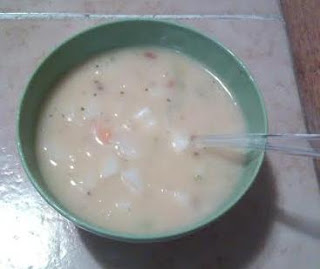
Corn starch, cornstarch, cornflour or maize starch or maize is the starch derived from the corn (maize) grain. The starch is obtained from the endosperm of the corn kernel. Corn starch is a popular food ingredient used in thickening sauces or soups, and is used in making corn syrup and other sugars.[1]
Source: http://bakingbites.com/2011/06/what-is-cornstarch/
Cornstarch is a fine, powdery starch that is made out of corn. The cornstarch is actually made from the endosperm of the corn, which makes up most of the kernels that we eat when enjoying popcorn or corn on the cob. Cornstarch, also sometimes called cornflour, is produced by grinding, washing and drying the endosperm of the corn until it reaches that fine, powdery state. Cornstarch is gluten free.







